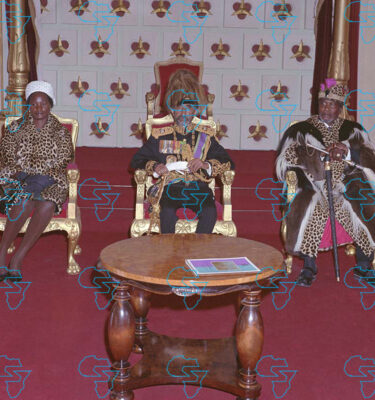
Africa must step up its resource mobilization efforts if the continent is to bridge a USD 3.3 trillion financing deficit over the coming decade, warns the African Union Development Agency-New Partnership for Africa’s Development (AUDA-NEPAD).
Nardos Bekele, CEO of the AU’s continental development arm, made the statement during a sideline briefing during the ongoing 37th AU summit in Addis Ababa.
The agency estimates Africa will require USD 8.3 trillion in development financing over the coming ten years.
“Of the total cost, five trillion dollars has already been pledged by nations to be budgeted in the next ten years. So the gap is 3.3 trillion dollars,” said the CEO.
AUDA-NEPAD, along with the AU Commission, has recently finalized preparing the continent’s development plan for the upcoming decade. It is the second of several ten-year plans under the AU’s overarching Agenda 2063. The first was finalized in 2023.
– Advertisement –
“We designed the second plan together with the AUC. We laid down the foresight analysis for the costs of the next ten years, based on scenario buildups and shocks predicted,” said Nardos.
In the meantime, AUDA-NEPAD is also crafting a continental development master plan. It aims at making coordinated investments aligned at national, regional and continental levels, in order to avoid resource wastage.
“We have mapped all development programs of each nation to implement them as one. So the fragmentation and uncoordinated development activities are no longer allowed. The resource leakages must stop. Africa cannot afford to squander resources,” said Nardos.
However, the CEO underscored that rigorous efforts are necessary to meet the USD 3.3 trillion financing gap expected in the coming decade.
“We are developing instruments to mobilize funds through national initiatives, as well as RECs and continental levels,” said Nardos, who has been elected to lead the continental development arm from Ethiopia. “Africa can master its own financing needs. We don’t have to beg all the time.”
The 37th AU summit is expected to take tangible steps in establishing the much anticipated AU Financial Institutions, which are also expected to put the continent’s disarrayed financial systems into perspective.
The African Union Heads of State and Government have long underscored the need to establish an African Monetary Union by harmonizing monetary zones and creating three African Union financial institutions: the African Central Bank (ACB), the African Monetary Fund (AMF) and the African Investment Bank (AIB).
Additionally, in January 2006, Heads of State and Government of the AU requested that the African Union Commission conduct a feasibility study on the creation of a Pan-African Stock Exchange (PASE).
Since the legal instruments to establish the AIB and the AMF were adopted in 2009 and 2014, respectively, none of the financial institutions has reached the requisite number of ratifications for implementation. In addition, there is inadequate funding for establishing the AU Financial Institutions, which is particularly detrimental to the operationalization of the AMF, which is the first step toward establishing the ACB.
The changing global economic landscape due to the COVID-19 pandemic, climate change and insecurity has underlined the need to expedite the establishment of the AUFIs and to revise the legal instruments establishing the AUFIs.
African Multilateral Financial Institutions (AMFIs), which are African-owned and African-controlled institutions, were created as treaty institutions by African sovereigns in response to the inadequacies of the global and continental financial architecture.
These AMFIs, which include the African Export Import Bank (AfreximBank), Trade and Development Bank (TDB), Africa Finance Corporation (AFC), African Reinsurance Corporation (Africa Re) and African Trade and Investment Development Insurance (ATIDI), have stepped up to support African states during recent times of crisis.
These institutions have broad ownership and participation by African states and have had a growing impact on financing and investment in the continent since their establishment. Collectively, AMFIs now hold assets more than USD 53 billion, attracting equity investment of over USD 8.6 billion, primarily from African countries, to support African growth and resilience.
AMFIs are among the leading supporters of African integration through trade, investment, and infrastructure financing to help implement the AfCFTA and Agenda 2063.
To strengthen and support Africa’s position in an evolving global financial architecture, the AMFIs must increase collaboration and coordination. It is to this end that African Multilateral Financial Institutions have come together to establish the Alliance of African Multilateral Financial Institutions (AAMFI), or more simply, the Africa Club.
The Africa Club aims to bring member institutions together to find solutions to financing challenges and help support Africa’s sustainable economic development and integration objectives, in line with their respective mandates and the development objectives of their member states. Membership of the Africa Club will be open to all African Multilateral Financial Institutions that are aligned with the objectives, purposes, and criteria of the Club.
The 37th summit is slated to discuss the AU financial institutions today on February 17, 2024.
.
.
.
#Africa #Face #USD3.3 #Trillion #Finance #Deficit #Decade #Development #Arm #Reporter #Latest #Ethiopian #News #Today
Source link











